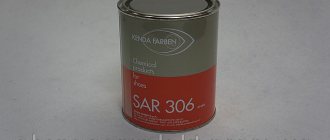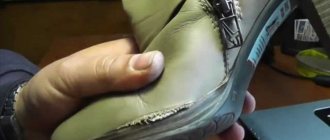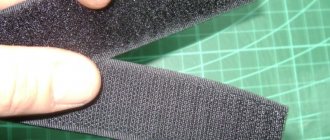It happens that scratches and scuffs on shoes appear as if out of nowhere. It's a shame, because good leather boots are not cheap, and you don't want to write off your favorite pair because of minor damage. Don't despair, we have good news: leather products can be updated. In this article we will tell you how to restore shoes made of genuine leather if they have defects.
How to repair cracked leather
If you do not pay proper attention to shoe care, cracks will appear on its surface.
To prevent shoes from deforming during storage, the toe is usually stuffed with paper, and thick cardboard is placed in the boot.
After each wear, wipe your shoes with a damp cloth and mask cracks with a special cream.
Fish oil can make shoes more water resistant. Light-colored boots and boots are treated with a soft brush, pre-moistened in warm water. Afterwards, the shoes are washed and dried naturally. As a preventive measure, it is worth wiping some steam with castor oil. The remaining oil is removed with cotton wool and rubbed with a velvet sponge.
You can get rid of cracks in any shoes using shoe care products. Water-repellent agents prevent the formation of cracks. The product is covered with a thin layer of cream to remove moisture. After this, the shoes are polished. A traditional means for treating leather products, shoe polish, protects it from external irritants.
HOW TO RESTORE SHOES
Don't rush to throw away your favorite pair of boots when you notice multiple scratches on them.
If the shoes are made of high-quality material, then they can be updated using simple and effective methods. Elimination of small scuffs If shoes have lost their shine and the leather has become dull, ordinary cheap products will help restore the original appearance: glycerin, petroleum jelly, baby cream, castor oil. These products will restore shine and smoothness to old leather shoes. Choose one of the products listed, rub into the surface of the skin and leave until completely absorbed.
Shoes made of matte leather can be restored using a mixture of turpentine and milk in equal proportions. Treat the surface with the resulting liquid using a sponge, leave to absorb, and then treat the product with a moisturizer. Regular ground coffee is suitable as a restorative for brown boots. Pour a small amount of water over the product to make a thick paste. Treat the surface with this slurry, gently rubbing in the coffee grounds, and let dry. Then remove the remaining coffee with a soft bristle brush.
Repairing boots at home
If the sole of your shoes has become unusable, then proceed to repair it. The most effective means include special glue for shoe restoration. To work, you will also need a knife, alcohol, clean cloth, newspaper, and a bag.
Lay out newspaper as a work surface.
Treat the sole with a cloth soaked in an alcohol solution. If possible, scrape off the old glue with sandpaper. Important! Read the instructions for using the glue.
Focus on safety precautions. Some products evaporate hazardous emissions, so open all windows in advance and ensure adequate ventilation. Apply glue on all sides so that it is evenly distributed over all irregularities. Apply pressure to the torn areas. To remove glue, use alcohol-based products.
This is interesting: Ideas and recommendations: how to remove fungus from shoes
Wrap the shoes in a bag and weigh them down with a heavy weight, for example, a book. Check that the tear area is carefully pressed. Leave the glue to dry for two days.
Repairing cracks and scratches
Once the shoes are completely dry, you can move on to the next step—filling the cracks. Be sure to stuff crumpled up newspapers or rags inside your shoes first. This will help maintain their shape. Fill the shoes as much as possible so that there is practically no free space left. The newspaper will not only help maintain the shape of the boots, but will also absorb any moisture that may get inside.
Honor is going to release a flagship smartphone with maximum specifications
With rough soles and elegant stilettos: trendy shoes for mid-spring 2021
Neptune will bring extra pounds: a special forecast from Vasilisa Volodina
Apply a moisturizer to your shoes, for example you can use mink oil. Pay special attention to the cracks, they need to be filled first. Do not skimp on the product, it should completely cover the creases. You can always remove any excess with a rag.
To help the product penetrate the cracks better, you can heat the shoes a little. Place it next to a heater or blow warm air with a hairdryer. This will help absorb the oil faster. Apply it not only to the cracks, but also to the entire surface of the shoe.
Why do I use mink oil? First of all, it is more convenient because it has a solid structure. It can be applied by hand. Moisturizers are made from wax and natural oils, so they are runny.
How to seal burst boots with liquid leather
Often, when walking, we catch our foot on a stone or other obstacle, and our shoes tear. However, if you have liquid skin on hand, then there is no need to worry.
The principle of working with it is as follows:
1. Dry the boots well, and then remove pieces of leather and threads. To do this, use a sharp knife.
2. Degrease the area to be treated using a soap solution. Leave on for 15 minutes and wait until the product dries.
3. If the product you use does not match the color of the leather of the shoes being restored, then mix the options you have and get the desired color.
4. Apply liquid leather to the damaged area, carefully treat the defect. Use a brush. If the shade is chosen incorrectly, you can remove the product within half an hour with a solvent. If everything is done correctly, wait until the product dries.
Were you able to repair your skin?
Yes, it worked No, I'll throw it away
Information. Liquid skin is not quite the same as cream. The consistency of the products varies. You can treat deformed areas with liquid leather and they will look like new.
Using liquid leather and glue
Liquid leather of different shades is now sold in stores. It is designed to repair damage. This product is suitable for removing scratches from patent leather. First, you should treat the damaged area with fine-grained sandpaper. Then take a cotton pad and soak it in a degreaser. A suitable option is alcohol. They wipe the area to be treated and then apply a thin layer of liquid skin.
The composition is left on the shoes to dry. After 20 minutes, the treated surface should be polished with a soft cloth. For deep scratches, the liquid will have to be applied several times at intervals of 15 minutes. Each new layer should harden well.
Restoring leatherette after reagents
During the winter months, roads are sprinkled with chemically active mixtures - special reagents. They minimize the risk of injury, but have a negative impact on the condition of the shoes. During this period, try to devote as much time as possible to her care.
For work you will need: ammonia (ammonia alcohol), vinegar, water, brush and cream. Follow these steps to repair leatherette products:
1. Take care of shoe maintenance. Household departments sell special products to protect against moisture and chemical components. Spray your shoes with a spray, dry naturally, and repeat the procedure. This will protect your pair of shoes from hazardous substances.
This is interesting: Shoemaker tips: how to soften shoes if they rub
2. Apply cream with mink oil to the leatherette to protect it from getting wet.
3. Boots will have to be treated constantly. After each use, clean the pair with a brush dipped in ammonia solution. Dilute a tablespoon of ammonia in a liter of water, wet the brush and apply to the boots. Dry them. Carefully lubricate the skin with cream.
Additional shoe care
You won't be able to get rid of cracks completely. Therefore, the procedure for filling them out will have to be repeated from time to time. To maintain the presentable appearance of your shoes, do not forget to properly care for them. Treat it with a special conditioner every week. It can be applied immediately after shoe repair.
Carry wet wipes or cotton cloth with you to remove dirt from its surface. If dried dirt accumulates on your shoes, cracks will appear faster. Don't forget to use emollient creams regularly.
Found a violation? Report content
Is it possible to repair a broken sole?
The soles of shoes tend to crack.
Patches on the damaged area do not guarantee that the shoes will not leak. For repairs you will need: acetone, sandpaper, camera, glue. First of all, clean the area of contamination. Treat the crack with sandpaper. Then apply acetone to degrease. After this, remove the edges in the damaged area using a special knife. The cutting depth should not exceed one millimeter.
Measure the location of the tear and add 15 millimeters to the result. Cut a strip of the appropriate size from the old camera. Sand the section with sandpaper. Apply acetone to degrease. Coat with special glue.
Bend the shoes so that the crack opens as much as possible. Apply glue to the damaged area and leave for 15 minutes. Bend the camera section. Place into the cracked sole and smooth it out. Place the weight on top of the shoes.
Sand your shoes to get rid of cracks
Don't be afraid to fill the cracks with more filler. Its excess can always be removed with sandpaper. It should have a slight grain so that it does not scratch or spoil the natural leather.
Press the sandpaper onto the area filled with filler. Sand the cracks to better camouflage them. If you did everything correctly, they should become invisible. After this, wipe the shoes with a dry cloth to remove any remaining dust and filler.
Ragged, scratched shoes - removing scratches
Your first step is to determine the scope of the problem. Feel the damaged area: if you feel roughness, this indicates that the skin itself is damaged.
If roughness is present in both directions, then only the coating is damaged.
The next step is to test the shoe polish on a specific area. This only applies to aggressive substances.
After testing the product, proceed to restoration: remove dust, dry and degrease.
The boots have visible stripes from the soles, which can be quickly removed. Use acetone and cotton wool. Spread the coating over the damaged area. Work carefully so as not to damage the shoes.
Some types of leather require delicate treatment. Use nail polish to cover up scratches. Apply it to the area under the scratch. Choose a suitable color or use a colorless option.
It is acceptable to use professional glue, which is designed for processing leather. If it is not there, then use the previously mentioned tool. Wrap the damaged area in a cloth and leave for five minutes. The product sets quickly and lasts a long time.
This is interesting: How best to stretch boots to the desired size if they are too small or too tight
Drying shoes is also important
After cleaning your shoes, it is important to dry them. Take a clean piece of cloth and wipe the skin thoroughly. It will help quickly remove residual soap and water. Rub it in a circular motion until it is completely clean. Pay special attention to cracks. They need to be wiped most thoroughly, because it is in these creases that hard-to-reach dirt accumulates. If it is not removed, you will not be able to properly fill the cracks. After this, leave the shoes to dry for 8-12 hours.
Restore color and shape to brown boots
To restore the color of boots, use a special paint in a bottle. Before processing, prepare the product:
- clean your boots and dry them;
- degrease the surface;
- place the newspaper inside;
- work in rubber gloves;
- Apply paint with a sponge;
- leave the product to dry for 15 hours.
Sometimes boots wear out and become uncomfortable. Those with narrow feet have to tighten their shoes tightly on their feet.
To restore the shape of your boots, use special insoles. You can find them in any shoe store. Silicone inserts are placed under the heel and glued to the shoe.
To return the boots to shape, it is recommended to store them in a box with holes. Be sure to place special pads inside. If the shoes become unusable after wet treatment, put newspaper inside and wait until the boots are completely dry.
Shoe protection
Shoe cosmetics are a reliable assistant that helps not only protect the surface from damage, but also extend the wear period.
- Salamander Kombi-Color (Germany) is a universal triple-action product. Used for cleaning and maintenance, protects well in aggressive environments (frost, rain, heat)
- Complex Oil Salton (Russia) – transparent shoe wax. Recommended for protection against moisture. Retains its qualities and properties for a long time. Penetrates deeply into pores, nourishing and moisturizing.
- Lack Polish Collonil (Germany) – designed specifically for the care of patent leather shoes. Available in aerosol form. Polishes, maintaining a glossy shine for a long time.
- Suede&nubuck (Great Britain) – foam for nubuck and suede, including artificial ones. It tints and softens well, protects from dust and moisture.
If the leather on your shoe is cracked
The following measures will help you avoid cracks in your shoes:
• clean your shoes regularly and use them as intended; • if your boots get wet, dry them at room temperature.
If a small crease appears on the surface, use newspaper to restore its shape. Treat the couple with cream. After this, repeat the procedure. Remove the cream and leave the boots alone for a day.
To prevent cracks from appearing, use wax; in this case, cracks in the skin will not be so noticeable. Liquid skin is considered to be the most effective remedy in the fight against cracks. The product is used for shoe restoration. Apply it to the area of skin being repaired in an even layer and do not touch for a couple of minutes. After this, apply cream.
Restoring shoes using superglue
If your leather shoes have a shallow crack, you can try to save them with superglue. You need to carefully fill the crack with glue and let it dry. Then cover the unevenness with paint of a suitable color and treat the surface with polish for leather shoes.
Now you know how to restore leather shoes at home. There is nothing difficult about this, especially if the defects are minor. But if your favorite shoes have serious damage and you are afraid of making things worse, then it makes sense to take the shoes to a specialist.
Shoe glue: brands for various materials
Wondering which adhesive is best for shoes made of a certain material? Let's take a look at the rating of high-quality special compounds for reliable bonding.
- KENDA FARBEN is a good shoe glue from an Italian manufacturer. It is considered universal and is excellent for gluing synthetic and natural leather. Copes with rubber, textile, wood, plastic, shotgun and metal products. It is often used by craftsmen when repairing boots, because the materials adhere quickly, and the seam is durable and moisture-resistant.
- UHU “SCHUH & LEDER” - this glue is actively used by shoemakers for gluing hard and soft materials. The seam has been characterized by increased elasticity for a long time. Resistantly withstands the negative effects of moisture, alkali and acid. It does not dry out for a long time and can withstand high and low temperatures. If the sole has burst, then using Uhu glue you can glue the separated parts together using the contact method. Use solvent reactivation or heat activation.
- Use professional EVA glue if you don’t know how to seal a hole in your shoes. It reliably connects corner and side cuts, porous surfaces of breaks. In addition, they can be used to glue the insole. This is a reliable waterproof product that does not flow under the influence of ultraviolet radiation and does not leave adhesive marks. Suitable for all types of materials except PVC.
- You can glue the polyurethane sole with Nairit Shoemaker. It is actively used in their work not only by shoemakers, but also by ordinary people. It has high strength and water resistance. Does not contain hazardous substances, therefore completely harmless to humans.
- Russian-made Contact glue has been popular for more than 10 years. This product is suitable for repairing leather, rubber, ceramic and porcelain products. With its help, it is possible to fill all the cracks and gaps. If we glue even heavily damaged parts, the seams will be almost invisible.
- The Henkel company suggests using Moment Marathon for repairing boots. This is a universal adhesive that is highly effective. Economical in consumption and convenient to use. It has fast adhesion and will only take a few hours to completely harden.
How to glue shoe soles?
Before sealing your boots, you should assess the damage and choose the most optimal remedy to repair the damage. An effective shoe glue must have the following qualities:
- long service life;
- reliability;
- water resistance and frost resistance;
- reliable gluing regardless of the thickness of the materials used;
- minimal rigidity;
- elasticity.
It is true that, in the absence of more suitable means, shoes can be sealed with sealant. However, with its help you will not achieve the necessary adhesive strength. In addition, if used carelessly, it can ruin the appearance of the product.
Many types of glue have the necessary properties, but not all of them can glue leather to polyurethane, rubber or PVC. Therefore, before purchasing adhesive of a particular brand, carefully read the instructions for use.
Rules for cleaning white leather boots
There are several methods for cleaning white leather boots at home. You can use folk methods, that is, the means that every housewife has at home. Or buy special cleaning products.
But for maximum effect, it is necessary to take into account the material from which the boots are made. The cleaning method also depends on the type of contamination. For example, it is best to get rid of ordinary dirt with a soap solution. Liquid soap or shampoo diluted in a 1:3 ratio with warm water is suitable as a cleaner.
Important to remember!
No matter how good the cleaning product is, the original whiteness of the boots cannot be restored.
Using a soft bristle brush, apply the solution to the dirt over the entire surface of the boots so that foam forms. After the procedure, excess solutions are removed with water or a rag and dried.
How to glue the sole
All elements of the shoe body are sewn together; only the sole can be glued. Even if it is additionally stitched, it will not prevent it from coming off if you trip or get caught badly. Before gluing shoes, you need to choose an adhesive. It should be:
Some types of glue, such as super glue in small tubes, boil upon contact with leather and leatherette, forming a hard, brittle joint. The skin seems to burn, and a hole forms at the joint at the first use. If you need to glue the joint between the sole and the leather upper, we recommend using:
rubber glue – universal and suitable for all types of materials;
Nairit (polychloroprene glue) – a special composition for professional use, recommended for gluing leather to rubber;
polyurethane glue - allows you to both glue leather and repair textiles, approved for PVC, rubber and polyurethane.
You can buy material to glue the soles of shoes in hardware stores and places that sell consumables and furniture fittings. If you haven’t found a suitable option, turn to compositions for household use - Moment adhesives, for example. Compare the descriptions on the packaging to correctly choose which glue is best for gluing - the manufacturer indicates the scope of application.











